Lung Cancer Experts in Ohio Share Day-to-Day Efforts to Quell COVID-19 Pandemic
Experts from The Ohio State University Comprehensive Cancer Center–The James as well as Blanchard Valley Health System discussed the impact of the COVID-19 pandemic on cancer care.
During the recent 2020 OncLive® State of the Science Summit™ on Lung Cancer, experts from The Ohio State University (OSU) Comprehensive Cancer Center—The James as well as Blanchard Valley Health System discussed the impact of the COVID-19 pandemic on cancer care and shared what advice they have been giving their patients.
David Carbone, MD, PhD, Director, James Thoracic Center, Barbara J. Bonner Chair in Lung Cancer Research, and Professor of Medicine, The OSU Comprehensive Cancer Center
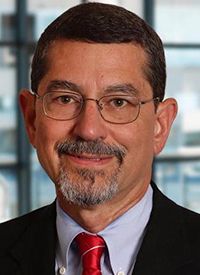
David Carbone, MD, PhD
David Carbone, MD, PhD
Director, James Thoracic Center, Barbara J. Bonner Chair in Lung Cancer Research, and Professor of Medicine, The OSU Comprehensive Cancer Center—The James
“This is a difficult [situation] because patients with lung cancer are exactly the population of patients who are at high risk [for infection]; they have lung disease and they’re older. I had clinic yesterday and the waiting room was packed with patients; it’s like a nursing home on steroids: the worst conceivable environment for passing around this virus. I don’t know what the solution to this [international problem] is. In Ohio, a man who was 50 years old, had no known contacts with disease, and had not traveled [was reported positive for the virus]. He must have gotten it from someone in the community. We’re not talking about just people from China or Italy or whatever; it’s among us.
Still, [it is said that] 100 times as many people die of regular influenza than of this disease. We need to study this disease. We need to come up with a vaccine. We need to do the best we can with standard precautionary measures of hand hygiene. Hopefully, within 1 year, we’ll have a vaccine and we can start immunizing people. However, the flu vaccine has been out there [for some time] and people are still not getting immunized with that vaccine, so we have our work cut out for us.”
Derek Thomas, MD, Hematologist and Oncologist, Blanchard Valley Health System

Derek Thomas, MD
Derek Thomas, MD
Hematologist/Oncologist, Blanchard Valley Health System
“[COVID-19] quickly became a very immediate concern. We had the first cases in Ohio [in early March 2020] and [it has] since become a local concern. As a practice, we’ve been discussing this [at length]. Patients are concerned about [the virus]; they’re asking about it.
We know that the patient populations that are being most greatly impacted by the virus, and experience the most critical illnesses from it, are our elderly patients; we see a number of these patients in the community and in oncology practices. Additionally, immunosuppressed patients [are also at risk for severe infections], which is a concern for our field. We work in a field [where many of our] patients [are immunosuppressed].
Right now, we’re taking action to improve [hand] hygiene as much as possible. We’re taking some [precautionary measures] to decrease the risk of spread, but it continues to be a concern. One of the [precautionary measures that have been] implemented is [having people] avoid coming in [to the institution] and going places if they have symptoms of illness, such as fever. However, it’s very important that we evaluate those patients who may have life-threatening infections who need to be treated. It will be a challenge, but it’s very important to have awareness and education, both for us and our patients, and to try to limit the disease spread as much as possible.”
Erin M. Bertino, MD, Medical Oncologist, Associate Professor, and Member, Translational Therapeutics Program, The OSU Comprehensive Cancer Center
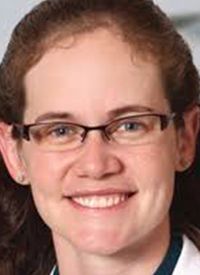
Erin M. Bertino, MD
Erin M. Bertino, MD
Medical Oncologist, Associate Professor, and Member, Translational Therapeutics Program, The OSU Comprehensive Cancer Center—The James
“[The fight against this virus is] going to be particularly challenging in the thoracic population because we already see issues like pneumonitis and pneumonia. Perhaps [we don’t see these issues] as much in our patients with EGFR mutations, but [we do in] many of our patients with underlying chronic obstructive pulmonary disease and underlying heart disease [from smoking].
One of my big concerns is that our patients are at higher risk of [experiencing] complications if they contract the virus. As oncologists, not infectious disease doctors, probably the most important thing is to encourage our patients to do the things we already encourage them to do: Stay away from people who are sick. As this unfolds, maybe avoid crowds and public spaces until we know a little bit more about how this is going to play out.
One of the [biggest] challenges that we’re going to face, as oncologists, include trying to stop people who may be ill from coming into our clinics and spreading it to other immunocompromised patients. Our patient population is high risk and [we need to figure out] how we can control infections in and around our clinics.”
Hui-Zi Chen, MD, PhD, Assistant Professor, Department of Internal Medicine, Division of Medical Oncology, The OSU Comprehensive Cancer Center

Hui-Zi Chen, MD, PhD
Hui-Zi Chen, MD, PhD
Assistant Professor, Department of Internal Medicine, Division of Medical Oncology, The OSU Comprehensive Cancer Center—James
“On March 11, 2020, the World Health Organization recently officially declared COVID-19 to be a pandemic. Probably like other opportunistic pathogens, COVID-19 will likely have a bigger impact on people who are frailer and have a compromised immune system; certainly, that would be the elderly population and for our patients who are receiving active therapy. Chemotherapy can cause immune suppression. It would make sense that our patients with cancer would potentially be at higher risk.
Bearing that in mind, we should definitely be diligent about trying to prevent further spread of the virus. I’m just following what the Centers for Disease Control and Prevention is recommending in terms of frequently washing our hands, avoiding large gatherings, and just being mindful about touching our face. Of course, traveling has been an issue as well.
Protecting yourself from getting the virus is critical in preventing the spread to others. The best thing that we can do in this situation is take care of ourselves first. If we all do that, we will ultimately help the community as a whole.”
Robert E. Merritt, MD, FACS, Director, Thoracic Surgery, The OSU Wexner Medical Center
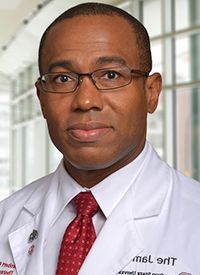
Robert E. Merritt, MD, FACS
Robert E. Merritt, MD, FACS
Director, Thoracic Surgery, The OSU Wexner Medical Center
“When dealing with an unknown pandemic, we obviously want to prevent the spread of the virus, but at the same time, we don’t want to compromise cancer care.
I would recommend that people use good judgment. Don’t make decisions on misinformation from the media. Talk to your doctor and get direction from your oncologists and surgeons and make good, sound decisions based on facts.”
Gregory Otterson, MD, Professor of Internal Medicine, Associate Division Director of Education, Division of Medical Oncology, Associate Program Director, Hematology/Oncology Fellowship Program, and Clinical Director, Thoracic Oncology Disease Specific Research Group, at The OSU Comprehensive Cancer Center
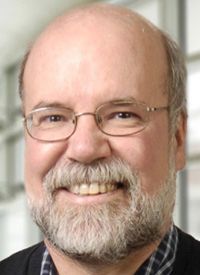
Gregory Otterson, MD
Gregory Otterson, MD: Professor of Internal Medicine, Associate Division Director of Education, Division of Medical Oncology, Associate Program Director, Hematology/Oncology Fellowship Program, and Clinical Director, Thoracic Oncology Disease Specific Research Group, at The OSU Comprehensive Cancer Center—James
“The only thing I will say is the same message that we have selling for 50 years: Wash your hands. Cleanliness is next to godliness. When you can’t wash your hands, use hand sanitizer. I’m not convinced that using a mask is all that helpful unless you’re sick or you’re across from someone who is sick. In a general population, [wearing a mask] probably doesn’t do all that much. I’m no expert in this field, but washing your hands clearly does.
Social distancing [is another aspect of all this]. Being cognizant of where you are and perhaps avoiding the grandson’s football or basketball game if hundreds of people [will be in attendance might be a good idea]. I just saw data online that looked at how in 1918, Philadelphia, Pennsylvania didn’t institute early quarantine-type measures when they found out the first cases of the Spanish flu, whereas St. Louis, Missouri did early on, and the epidemic in Philadelphia was much more significant than it was in St. Louis.
Although it might be seen as a little bit reactionary to shut down all these sports games, concerts, and meetings—a bunch of oncology meetings have already been cancelled—I suppose it’s better to be overreactive than under-reactive and then in 1 month, regret it. I support whatever the epidemiologists tell us is the right thing to do. For the individual patient: Wash your hands, wash them again, and then, wash them again after talking with or seeing someone.”
Carolyn J. Presley, MD, MHS, Thoracic and Geriatric Oncologist and Assistant Professor of Medical Oncology, Division of Medical Oncology, The OSU Comprehensive Cancer Center

Carolyn J. Presley, MD, MHS
Carolyn J. Presley, MD, MHS
Thoracic and Geriatric Oncologist and Assistant Professor of Medical Oncology, Division of Medical Oncology, The OSU Comprehensive Cancer Center—James
“COVID-19 is real and we should be thinking ahead to figure out how we will protect our patients rather than waiting for crisis to come to us. The very first thing [to remember] is, if your patient has a fever, they should stay home; they should actually not come to see you, unless you are able to isolate them immediately upon arrival by putting a mask on them and putting them in a room by themselves to perform the testing. If you don’t have the testing, you should at least be doing a flu swab; seeing if the symptoms are caused by flu or something else would be helpful.
Also, patients who are in surveillance could get their scans but not necessarily be seen. Minimizing interactions with the healthcare system is only in our patients’ best interests; they should not be in crowded places. [We should minimize] surveillance visits during this time; they can get their scan, but they don’t need to come into the office and be exposed to other people.
I would add that if healthcare workers are not feeling well, they should not go to work, which is very hard because we’re all very busy and we see many patients. Lastly, now is not the time to go on a cruise ship.”
Terence Williams, MD, PhD, Associate Professor and Member, Molecular Biology and Cancer Genetics Program, The OSU Comprehensive Cancer Center
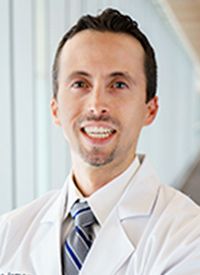
Terence Williams, MD, PhD
Terence Williams, MD, PhD
Associate Professor and Member, Molecular Biology and Cancer Genetics Program, The OSU Comprehensive Cancer Center—James
“We’re all trying to learn what to do next. New information is constantly being released and we’re trying to quickly adapt to the landscape. At my institution, we’ve moved to minimizing group meetings and person-to-person exposure times. All our tumor boards have been converted to virtual meetings. In addition, all of our quality assurance checks and chart rounds have been moved to virtual meetings.
We’re also cancelling patient appointments for patients who want to do that. Our elderly patients have been calling us to see whether they can cancel. If the appointment is a routine follow-up, we don’t have a problem moving them 1 to 2 months out; that may help to reduce some of the burden with regard to the number of appointments [and exposure]. The key is minimizing exposure to others and being counseled on all the right signs of potential infection so that early intervention can be prioritized.”
Latest Conference Coverage

Navigating the Intersection of Radiation Therapy and Immunotherapy in Endometrial Cancer

As Orthopedic Oncology Evolves, Caring for the Clinician Must Be a Priority

Belumosudil Produces Long-Term Responses Without New Safety Concerns in cGVHD

Prophylactic Itacitinib May Safely Mitigate CRS Following Axi-Cel Administration in Lymphoma
2 Commerce Drive
Cranbury, NJ 08512